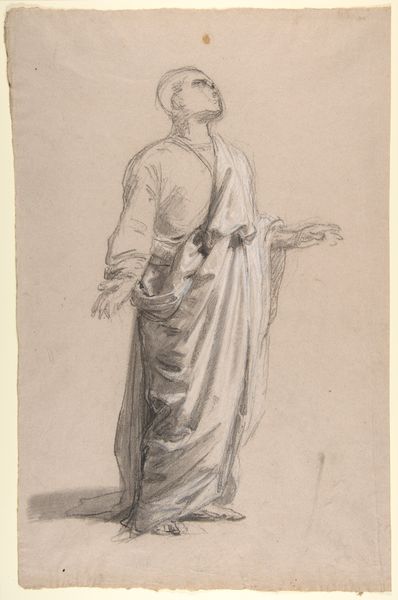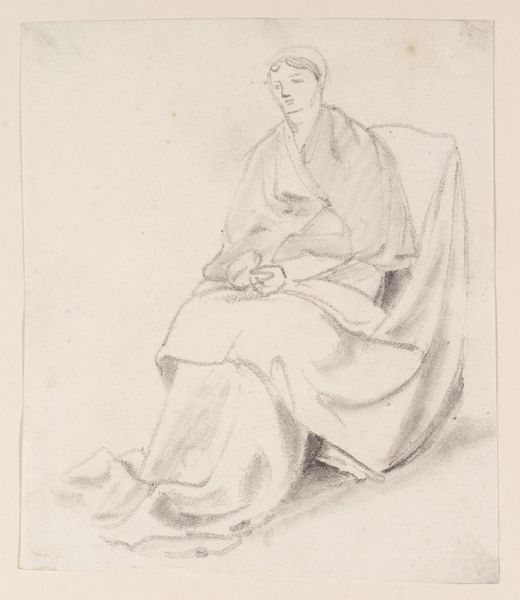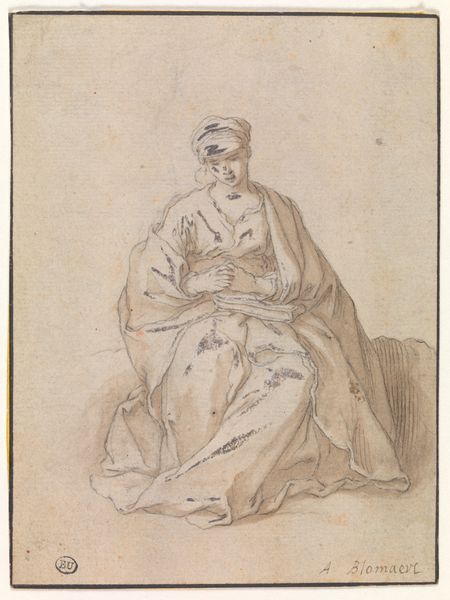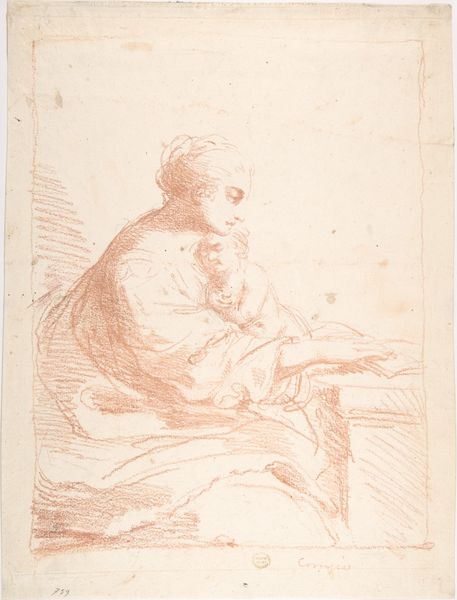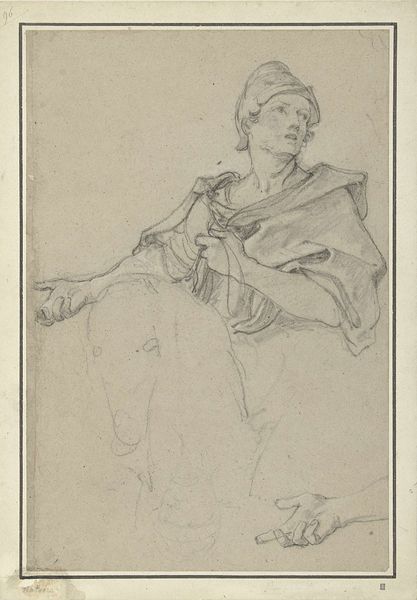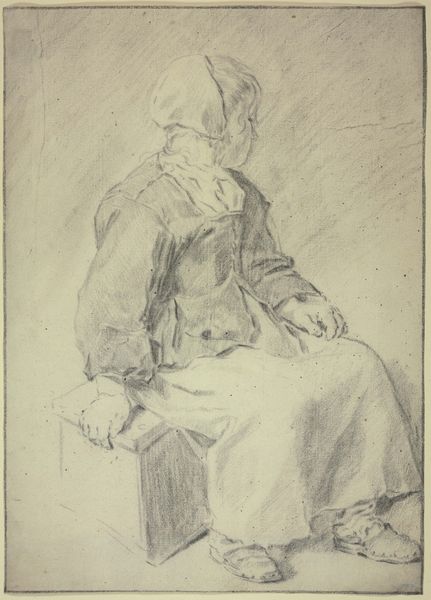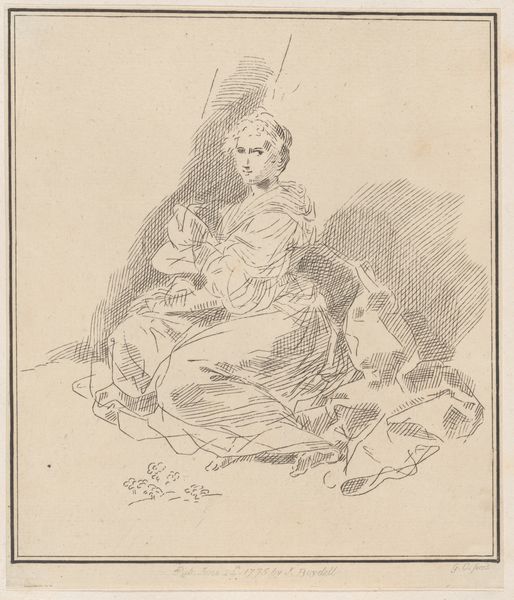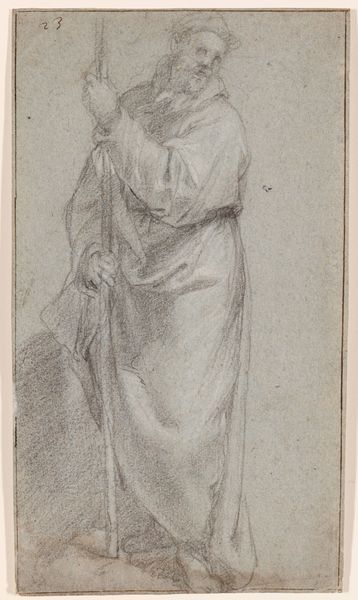
drawing, print, etching, intaglio
#
portrait
#
drawing
# print
#
etching
#
intaglio
#
figuration
#
pencil drawing
#
men
#
genre-painting
Dimensions: Sheet: 3 9/16 × 2 1/4 in. (9.1 × 5.7 cm)
Copyright: Public Domain
Editor: This is "Seated Ecclesiastic," an etching and intaglio print by Stefano della Bella, created sometime between 1657 and 1667. I’m struck by the starkness of it, the seemingly simple lines. What can you tell me about it? Curator: It's an evocative print. But instead of immediately focusing on symbolic readings, let's consider the material process itself. Etching, as a reproductive medium, inherently democratizes the image. How does the material of the etching—the acid biting into the metal, the repetitive process of inking and printing—reflect, or perhaps even challenge, the social position of the Ecclesiastic depicted? Editor: That’s an interesting point. I hadn't thought about the irony of using a mass-producible medium to depict someone of relatively high status. So, you’re saying the print’s inherent replicability affects how we view the subject? Curator: Precisely. Consider the labor involved in creating this print: the artisan's skill, the materials sourced, the economics of print distribution in 17th-century Europe. Can the availability of religious images, made possible by such reproductive techniques, erode the unique value once assigned to holy men and their likeness? Editor: So, you’re not just asking what the image *means*, but what its *making* implies about the changing social and economic landscape? Curator: Absolutely. Look closely at the clothing depicted. Are we looking at high end robes of expensive material? Are those garments simple or complex to fabricate? Are they produced locally, or imported through trade? Editor: It does bring a new depth to my viewing, a focus on production and the relationship between the object and its creation in society. Thank you. Curator: And by recognizing those production qualities and questioning inherent societal assumptions, we are better able to reflect on how they affect the subjects they create and depict.
Comments
No comments
Be the first to comment and join the conversation on the ultimate creative platform.


